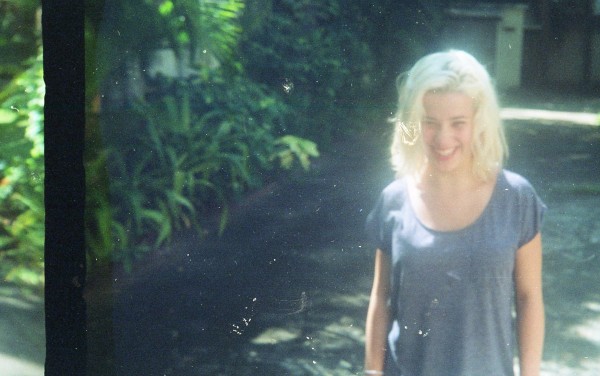The Zeiss Ikon Ikonta 35 (522/24) is a cleverly-designed little camera from the late 1940s and early 1950s that fits in your pocket and is easy and fun to use. In fact, after World War II, this German-manufactured camera became a hit with GIs stationed in Germany as it was sold in military PXes.
The camera’s Novar-Anastigmat lens is supposed to be decent, with good resolution, and my 1950-ish model is supposedly one of the earlier coated lenses. I’ve seen others get good results with this camera – sharp, and in focus. Yet mine, for unknown reasons, refuses to turn out anything but blurry photos – almost as if it were a cheap plastic lens.
So I asked around for some advice and had a great suggestion: I could re-calibrate the lens, ensuring it was focused properly at infinity. The technical term for this is lens “collimation” and there are easy guides like this one to help you do it. I decided to use the “cat fur” variant of lens collimation, and one Saturday afternoon, set everything up and got it done. I used a digital camera as the “known good focus” camera , and using two tripods as in the photo below so that I could ensure both photo planes were parallel, quickly got the job done. As you can see on the photo above, there are three screws holding the outer ring with the distance markings to the lens itself – you can easily remove this. With a piece of tape and some cat fur across the film gate of the Ikonta, I was able to then adjust the lens until I could see the fur in sharp focus on the digital camera’s monitor (with the digital camera’s focus set to infinity). I replaced the outer ring, with this position of the lens as “infinity” and put everything back together.
Then it was time to go out and test the camera with real film. I set the camera at 6 feet and had someone stand at 1-foot intervals from 4 to 10 feet. Then I set the camera at 9, 15 and 30 feet and had someone stand at various distances. And still none of the photos are in focus. The “least worst” photo was the one at 4 feet (with the camera focused at 6 feet) – in fact, it seems that the biggest factor in how well the lens focuses is the distance from the camera, regardless if it’s in focus. The aperture was at f/11 the whole time.
Is there a factor I could be overlooking? And secondary to that, this is brand new film which I processed myself – it went onto the spool with no issues, yet the resulting photos are full of scratches (and an occasional bit of fuzz or dog fur, which is explainable). Is there a good explanation for all of the scuffs, scratches and other defects on the negatives, assuming they were handled with care (they were!)
Camera focus set at 6 feet, subject at 4 feet:
Camera set at 6 feet, subject at 5 feet:
Camera set at 6 feet, subject at 6 feet:
Camera set at 6 feet, subject at 8 feet:
Camera set at 6 feet, subject at 10 feet:
Camera at 6 feet, subject at 12 feet:
Camera focused at 15 feet, subject at 15 feet:
Camera set at 30 feet, subject at 15 feet:
Camera set at 30 feet, subject at 30 feet:
Camera at infinity, subject at 50 feet or so:
There are more, but no additional info is offered – they are all blurry!














